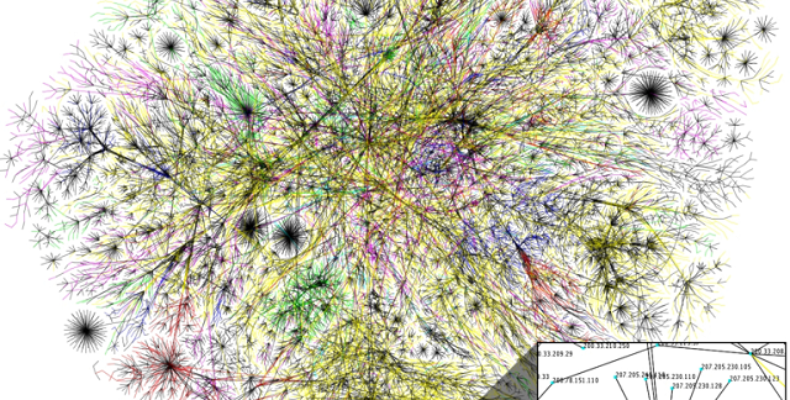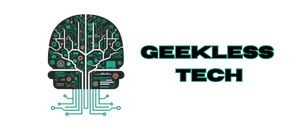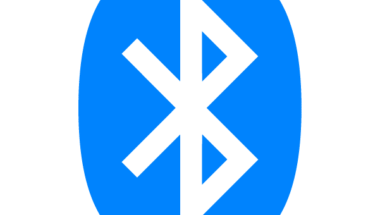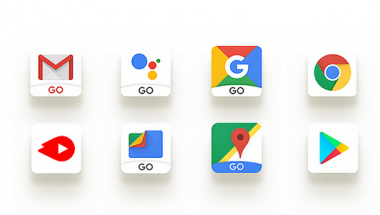Blog

Internet Governance: Who Runs Internet?
When the internet comes into the world, it has completely changed the way of working. It has given plenty of benefits & improvements in the life of people around the globe. For example, it helps a lot in distant communication far and wide. Besides, it decreases the cost of business transactions both nationally and internationally. However, along with countless advantages, it has brought some challenges also like cyberattacks, privacy concerns, etc. Not a single person is there who runs the internet. Therefore, it is not possible to pinpoint someone and blame them. Is it not crazy?
So, now a question arises: is there any internet governing body? If there is any, then who is there? As per the infographic of ICANN, there is not one association, person, organization, or government that runs the internet. ICANN or Internet Corporation for Assigned Names and Numbers said that this one is a globally distributed computer network. They have also said that it consists of multiple voluntarily interconnected autonomous networks. Before knowing who runs the internet, let’s see what the actual internet is.
What is the internet?
Internet is the most famous computer network in the world. In 1969, it started as an academic research project, and later in the 1990s, it became a global commercial network. In recent times, more than 2 billion people used this.
It is remarkable for its decentralization. People who use the internet don’t own it. Instead, several different organizations operate their networks. In most cases, people access internet content with the help of a web browser. Unfortunately, the web is so famous that multiple people treat it wrongly. In reality, the web is an internet application, and email and BitTorrent are also a few renowned Internet applications.
Who Runs Internet?
Who governs the internet?
No one is there who runs the internet. Instead, the internet is a globally distributed network that consists of interconnected autonomous networks. No central governing body of the internet exists. Although no sole entity runs the internet, there are still some institutions with some control.
The Internet Governance Forum (IGF) is led by the U.N. or the United Nations (U.N.). This multi-stakeholder forum helps to promote conversation about policy.
IAB is also on board with internet governance. It stands for Internet Architecture Board, and the United States Department makes this one of Defense’s Defense Advanced Research Project agencies. It oversees the technical and engineering development of the internet with the help of ISOC or the Internet Society.
ICANN is one of the major ones to discuss in the Internet world. The standard form of ICANN is the Internet Corporation for Assigned Names and Numbers. These help to allocate I.P. addresses and domain name systems (DNS). It tracks all names of domains and helps to translate them into I.P. addresses.
The Internet Engineering Task Force (IETF) is one of those which helps to develop and promote various internet standards. It deals with standards that the Internet protocol suite sets.
Besides, the Internet Research Task Force (IRTF) makes a long-term research group to promote the research of the evolution of the internet. These groups work on Internet protocols, applications, architecture, and technology. International Organization for Standardization (ISO 3166) defines Internet standards.
Who Runs Internet Things?
In addition, the World Wide Web Consortium (WSC) also belongs to the main international standards organization for the World Wide Web.
Many universities and governments operate their networks, exchanging their traffic depending on the voluntary interconnection agreements.
Internet Engineering Task Force manages the shared technical standards. It is an open organization where anyone can attend meetings and suggest new standards.
You do not need to adopt its standards, and however, its decision-making method makes sure that the internet community adopts its recommendations.
The ISO 3166 standard helps set up internationally recognized codes to represent nation names, territories, interested geopolitical areas, etc. However, you should know that it doesn’t establish the nation names, and it represents only the codes representing them. These operations are education, access, web browsing, online commerce, social networking, etc. In addition, it helps to coordinate the special identifiers of the internet’s systems. The unique identifiers are I.P. addresses, protocol parameter registries, top-level domain space, etc. ISOC has come with more than 90 chapters in around 80 nations in recent times. The technical documents define protocols, schemas, message formats, and languages to influence the interoperability of systems on the internet.
The Challenges in Governing:
There are many things required to do with disagreements among significant powers. It is why no single body governs the internet. Instead, it includes the governments of the United States, the European Union, Russia, and China. They have been working continuously on how to manage the internet.
The U.S. and the E.U. work together to continue the decentralizing, multi-stakeholder procedure, including governments, private citizens, and businesses.
The Solutions:
Although there are challenges, multiple seek an agreeable solution. Several international institutions incorporate internet governance into pre-existing institutions, and thus, these take into account the internet in their domains. For example, the U.N. Human Rights Council passed a resolution in 2012, and it affirmed, “the same rights that people have offline must be protected online.”
Besides, the U.N. Office on Drugs and Crime (UNODC) initiated a draft study to take up cybercrime. It helps to test the capability of a nation to tackle and fight it.
Developers make norms for cybersecurity. The reason is that cybersecurity risks and attacks have become common increasingly.
A few nations have different ideas of having “responsible behavior” entails. For example, many other NATO countries with the United States support the laws of armed conflict. But China and Russia are promoting the “cyber sovereignty” idea actively.
People are trying to make the best of the internet by coming together. However, it isn’t a straightforward method. Different countries have different ideas, but all need to work together to get a standard solution. However, it takes time.
Who created the internet?
It started its journey as ARPANET. The standard form is an academic research network, and the military’s Advanced Research Projects Agency funded ARPANET.
Bob Taylor was the one who led the project, and he was an ARPA administrator. Bolt, Beranek, and Newman built the network with the consulting firm, and it began operations in 1969.
Vint Cerf and Bob Kahn started working on the next generation of networking standards for the ARPANET in 1973. Both of them are software engineers.
The TCP/IP standards are the foundation of the modern internet. From January 1, 1983, ARPANET started using TCP/IP.
In the 1980s, the National Science Foundation started giving funds to the internet ( previously, it was military). The long-distance networks that got funds from the NSF served as the backbone of the internet from 1981 until 1994. The Clinton Administration gave control to the private sector in 1994, and it has been operated and funded.
However, multiple organizations indeed have the internet. It comprises various bits and pieces where each has its own. A few owners are capable of controlling the quality and level of access. They may not own the entire system, but these can affect the internet experience.
The Internet backbone is the physical network that helps carry internet traffic between various computer systems. ARPANET served as a backbone of the system in previous days. Nowadays, some big corporations offer routers and cable, making up the Internet backbone. The companies are upstream ISPs of Internet Service Providers. It indicates that anyone willing to access the internet should work with the companies. These include:
- UUNET
- Level 3
- Verizon
- AT&T
- Qwest
- Sprint
- IBM
Internet Exchange Points:
Multiple consumers and businesses can subscribe to ISPs. These don’t belong to the Internet backbone, and this type of ISPs negotiates with the upstream ISPs. Cable and DSL companies are instances of small ISPs.
Internet Exchange Points (IXPs) are the physical connections available between networks. These allow data exchanges. For instance, Sprint, Verizon, and AT&T offer part of the Internet backbone’s infrastructure. But these are not intertwined. Instead, these have a connection at an IXP. There are many companies and nonprofit organizations that administer IXPs.
A few computer networks can make up the internet because they have owners. Each ISP comes with its network, and however, governments of a few nations oversee computer networks. Multiple companies come with LANs or local area networks that connect to the internet. This type of network is an individual entity and a part of the internet. Based on the local laws, the networks can control the access level.
Using a device to connect to the internet indicates that it has become a part of the enormous inter-networked system.
Internet governance:
It applies norms, decision-making methods, shared principles, rules, programs, etc. Internet governance is the one that gives shape to the evolution and use of the internet. Make sure that you don’t get confused between internet governance and e-governance. It indicates the use of technology to the governments to carry out the governing duties.
Definition:
Its definition has been contested by separating groups across ideological lines.
The primary debate concerns the participation of some actors like national governments, corporate entities, civil society, etc.
A group set up after an UN-initiated WSIS or World Summit on the Information Society suggested the following definition as a part of the June 2005 report. The report said that it is a development by Governments, the private sector, and civil society. These have different roles like norms, shared principles, rules, decision-making processes.
Law professor Yochai Benkler invented a conceptualization theme taking the help of the idea of three “layers” of governance.
Physical infrastructure layer that is used for traveling information
Code or logical layer that controls the infrastructure.
Content layer that can contain the data signal through the network.
You can get comprehensive definitions from Professors Jovan Kurbalija and Laura DeNardis. The most policy-relevant question in recent times is if the regulatory responses are correct to police. Contents sent via the internet include necessary rules to improve Internet safety, dealing with threats like cyber-bullying, copyright infringement, data protection, etc.
History:
Request for Comments (RFCs) memos documented technical decisions while ARPANET’s development ran. RFCs document the standards of today’s internet still now.
The NSF or U.S. National Science Foundation made the NSFNET backbone between 1984 and 1986 with the help of TCP/IP so that they can connect their supercomputing benefits. Later, NSFNET started working as a general-purpose research network, and it became a hub that helps connect the supercomputing centers, the regional research, education networks, etc. The combined networks are called the internet. Countries like Australia, Germany, Israel, Italy, Japan, Mexico, the Netherlands, New Zealand, and the U.K. were attached to it by 1989. It had grown so that it was possible to contain over 160,000 hosts.
The ARPANET was terminated in 1990. Next year, the NSF started keeping restrictions on commercial use on NSFNET. Then, the commercial network providers started interconnecting. The final restrictions were completed on April 30, 1995. Unfortunately, the service was completed while the NSF had finished its sponsorship of the NSFNET Backbone Service. In recent times, the private sector has offered and owns about all Internet infrastructure in the U.S., and these exchange their traffic under established Internet standards and commercial agreements.
Governors:
DARPA set up the Internet Configuration Control Board in 1979 to oversee the development of the network. It was renamed the Internet Advisory Board (IAB) in 1984. In 1986, the board became the Internet Activities Board.
The government of the United States formed IFTF or Internet Engineering Task Force to assist in the development and promotion of internet standards Researchers. This business was performed with the help of email. Jon Postel continued overseeing address allocation from the earlier days to the death during 1998. He oversaw a few I.P. numbering as Director of the Computer Networks Division at the Information Sciences Institute of the University of Southern California. It is done under one contract from the Department of Defense, called the Internet Assigned Numbers Authority (IANA). People expect it to be extended to increase DNS servers; small organizations grow, etc. Postel worked as RFC Editor also.
Regional Internet Registries:
I.P. addresses were allocated to five Regional Internet Registries (RIRs):
- American Registry for Internet Numbers (ARIN) for North America
- Réseaux IP Européens – Network Coordination Centre (RIPE NCC) for Europe, the Middle East, and Central Asia
- Asia-Pacific Network Information Centre (APNIC) for Asia and the Pacific region
- Latin American and Caribbean Internet Addresses Registry (LACNIC) for Latin America and the Caribbean region
- African Network Information Center (AfriNIC). The African Network Information Center was made in 2004 to adjust allocations for Africa.
Jon Postel died in 1998, after which IANA became ICANN’s part. It is a California nonprofit set up in September 1998 by the U.S. government. At the initial time, the internet community elected two board members, and however, the rest of the board changed it in 2002 in a public meeting in Accra, Ghana.
Internet Society:
The Internet Society (ISOC) was established in 1992. Their motive is to ensure that people worldwide will benefit from the open development, evolution, and internet use. Individuals, corporations, organizations, governments, and universities are members of it.
After renaming the Internet Architecture Board, it became a part of ISOC. You should know that the Internet Engineering Task Force was also a part of the ISOC. The Internet Engineering Steering Group (IESG) oversees the IETF, and Internet Research Task Force carries on long-term research where the Internet Research Steering Group oversees it.
ICANN:
When the first World Summit was running in Geneva in 2003 on the information society, Internet governance was discussed. However, ICANN was a private corporation under contract with the U.S. government at that time. As a result, a controversy was there among governments of Brazil, China, South Africa, and some Arab states. But no general agreement was there on the definition of it. Therefore, United Nations Secretary-General Kofi Annan decided to initiate a working group to make the issues clear. They did this before the second part of WSIS in Tunis 2005.
After a long debate on this controversy, participants agreed to allow for a broader international discussion on the policy principles. As a result, people decided to set up an Internet Governance Forum (IGF), and the United Nations Secretary-General convened that. The Greek government hosted the first such meeting.
The United Nations General Assembly renewed the Annual global IGFs in December 2010 for five years. However, since 2006, it has been held. Some regional IGFs were in Africa, the Arab region, Asia-Pacific, Latin America, the Caribbean, and sub-regions with the annual global IGF. The United Nations General Assembly renewed it again in December 2015 for ten years.
What is Dynamic Coalition on Public Access in Libraries (DC-PAL)?
D.C.s are multi-stakeholder, issue-specific interest groups that work for the IGF event during the year. For example, electronic Information for Libraries (EIFL) and IFLA organized the dynamic coalition in 2011 in libraries. These organizations represent plenty of public libraries in all nations at the IGF. Anyone can contribute to the discussions of the D.C.s as these are open to all. However, they need a time slot for hosting a session. Besides, they must provide a report on the progress and plans.
Why is it more critical for libraries to participate in the IGF?
Public libraries are actually on the agenda of IGF, and it is a cross-cutting problem on some IGF key themes. These include Internet Governance and Development; Access and Diversity; Security, Openness and Privacy, Youth. This IGF is a chance to make a dialogue between library representatives, policymakers, and the other stakeholders. They should have joined libraries in significant policy places related to the internet and development, including free access to information, education, security, openness, and privacy.
You should know that public access is an increasing issue day by day. The reason is that libraries’ Internet access cannot meet all targets in the U.N. Sustainable Development Goals.
Why do you need to participate?
When you participate as a librarian, you must know about the IFLA’s position on Internet issues. Besides, if you want to be a powerful library advocate, you need to have professional tools.
- You can take help and get support from library organizations or library associations/societies. It is because the agencies can produce the most influential representatives.
- See whether your national or regional association gets a library role in the information society.
- Make sure that you have identified the targets for participation. These include library advocacy, dissemination of IFLA positions, partnership searching, getting necessary knowledge and skills.
- Go through the position of IFLA on Internet Governance, the Principles on Public Access in Libraries, and the role of libraries in Information Society, development, and freedom of access to information, etc.
- It would help if you tried formulating your talking points. For instance, libraries are the public institutions in which accessing ICTs generates digital inclusion. Therefore, all will get the opportunity.
- Libraries contain the vital data necessary for the communities like accessing educational, legislative, health, ecological, municipal, business, tourist information.
- Besides, there is a fact you need to know is that libraries may be vital partners in the development of e-government services. Over 230,000 public libraries are available in developing nations.
- You should see the background documents available on WSIS and IGF websites if necessary.
- Try to investigate how it is possible to participate in the IGF preparatory phases via regional or national IGFs.
Remote participation:
IGF has been working to be a fully accessible event via live streaming of all sessions for a long time. On average, there exist 200 workshops along with streaming main live sessions for opening & closing ceremonies.
With the help of remote participation, you can participate in the sessions, and it allows you to intervene with questions and experience remote moderation of the workshops. Hosting remote hubs is an excellent initiative for libraries. Here, people who are willing to attend the IGF, but couldn’t, can see the webcast together and send their queries through text or video. Besides, the hub organizers can hold debates so that they can discuss the themes available at the IGF.
People can get essential information about remote participation and hosting remote hubs on the main IGF website.
You need to know that Internet Governance comes in 4 layers as additional information.
- Physical Infrastructure layer
- Code or Logical layer
- Content layer
- Security
Internet governance has a connection with the following things: Internet Protocol Addressing (I.P. Addressing), Domain Name System (DNS), Routing, Technical Innovations, Standardization, Security, Public Policy, Privacy, Legal Issues, Cyber Norms, Intellectual Property, and taxation.
Approach:
India has huge support on a multi-stakeholder approach when it comes to internet governance. The government has massive control over national security. However, industry and human resources are the main power of India in the sector. And this may be leveraged in a multi-stakeholder approach. Moreover, this type of approach helps to align with the investment strategy for Digital India. As a result, it becomes useful for India to participate in the multi-billion-dollar business.
Responsibility of Internet Governance:
These are as follows:
- Awareness of Internet Governance
- Promotion of Multi-stakeholder model within India of this purpose
- Representation of Public Policy Concerns of India on a global platform,
- Egging on more significant participation in IETF or Internet Engineering Task Force
- Making the internet more powerful
- Internet Infrastructure of the nation
- Working groups and Engagement with Internet Society (ISOC)
Engagement with ICANN:
ICANN’s all activities are monitored. The main purpose of the GAC is to offer advice to ICANN on public policy. It is mainly while an interaction exists between ICANN’s activities or policies and national laws or international agreements.
Multi-stakeholder Consultations:
India has given support to the multi-stakeholder model of Internet Governance Mechanisms. It has all the stakeholders. These are useful to preserve the internet’s character and a dynamic engine for innovation. Ministry of Electronics & Information Technology organizes Multi-stakeholder consultations/ roundtable meetings. All stakeholders can join this Multi-stakeholder Consultation. Therefore, if anyone is interested, he can participate in such consultation.
Awareness:
Internet Governance Division undertakes the Research, Development, and awareness projects.
- Advanced Internet Operations Research in India (AIORI) by Software Technology
- Parks of India (STPI) Funded by MeitY.
The project helps to improve security and stability. Besides, it helps to understand the Internet’s DNS infrastructure in India with the help of advanced Internet Operations research. Moreover, it creates relationships among the community of members. Besides, it helps to facilitate an environment where you can share information confidentially.
It helps to boost awareness of the DNS’s significance. In addition, it offers publicly available tools and services.
C-DAC or Centre for Development of Advanced Computing implements “IG-SIM- Internet Governance – Structured Implementation Module.” This project helps to offer technical and policy support to training, workshops, research, and preparation of the white paper. Besides, it provides technology reports on different internet governance Policies and Technology related issues.
It offers ongoing implementation support to the activities of the Indian government, which are related to I.G. The main motive of the project is to be a model center. It helps to offer leadership in DNS and its security-related technologies. Besides, it can conduct quality research in DNS Security.
NIXI gives the fund to the ICANN Research and Multi-stakeholder Engagement Assistant Programme. Its target is enabling meaningful engagement in internet governance institutions.
What do the Internet’s Stakeholders do?
Their functions are as follows:-
- Advice
- Community Engagement
- Education
- Operations
- Policy
- Research
- Standards
- Services
Who are the Internet’s Stakeholders?
The stakeholders of the internet are as follows:-
- Internet Network Operators’ Groups
- W3C – World Wide Web Consortium
- IGF – Internet Governance Forum
- IETF – Internet Engineering Task Force
- ISO -International Organization For Standardization
- Governments and Inter-Governmental Organizations/li>
- IRTF – Internet Research Task Force
- RIRs – Regional Internet Registries
- ISOC – Internet Society
The bottom line:
It will be better to consider the internet as an entity run by several different groups from different academia, private sector, government, national and international organizations. They all need to work together to create policies and standards to ensure that the internet is correct globally. A “living” graphic has been released by ICANN, which offers a high-level view that lets you know who runs the internet and how it runs.
Frequently Asked Questions:
- Can the internet be shut down?
If you try to disable the whole internet, it will look like stopping every river flow in the world at a time. One single connection point is not there from where all data flows. The internet protocol was explicitly designed to help data find a route around parts of the network.
- Who controls the Internet backbone?
The core consists of individual high-speed fiber-optic networks, which peers with each other to make the internet backbone. Tier 1 ISP or internet service providers own the respective core networks privately. These are the giant carriers that keep their networks tied together.
- Does someone own the internet?
Internet is a network of networks. Every individual network comes from different companies and organizations, and these depend on physical servers in various countries with different laws and regulations.




